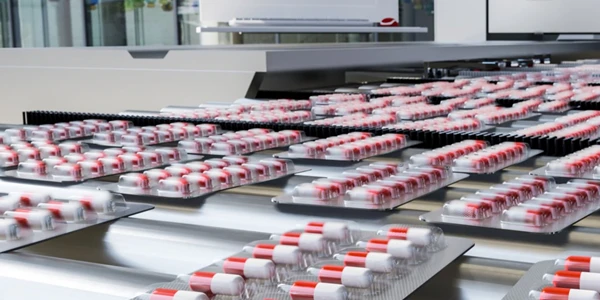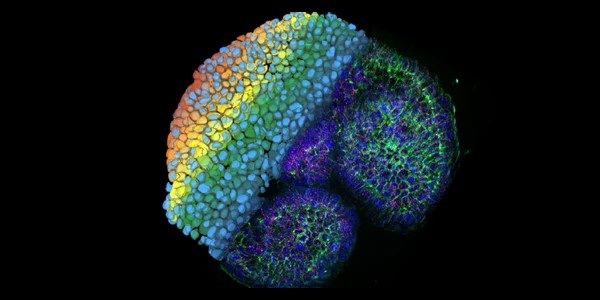Used versus Refurbished Lab Equipment: Points to Consider
Consideration of the differences will help you make the right decision for your applications, your budget, and perhaps future plans for your lab operation
In your search for quality laboratory equipment, you’ve no doubt come across many types of providers. You’ve likely weighed the possibilities of new versus used equipment – the pros and cons and how one may benefit your operations more so than the other.
Another distinction between lab equipment that warrants serious consideration is the comparison of used versus refurbished. “Used” equipment does not necessarily equate to “refurbished” equipment and vice versa.
Used Lab Equipment
Used or pre-owned typically implies the item has been “used by a previous owner”. This may well be the case with many commodities but when it comes to lab equipment, the “used” label can have a more diverse meaning.
- “Used” can mean the item was setup and installed in a lab. The item, however, may not have been used frequently or even at all. Sometimes labs undergo liquidation, due to shifting business priorities, consolidation, mergers or other events. In these cases, lightly used or previously new equipment may be picked up and sold be third party sellers. These discounted items may be backed with warranties or time-limited guarantees, proving piece of mind that this “as is” item comes with a certain level of confidence in operation.
- "Used" can also mean the item has been in operation, however long the duration, and that it retains some level of functionality. This can cover a fairly wide area. The item may include all components buy may not have been powered up. The item may power up but may not have been tested. The item may have been tested to the extent of scrolling through the display options. More extensive testing may have been performed by running through onboard protocols or diagnostics. Manufacturer specs may have been met through testing these onboard features. Of course, any combination of these measures may be taken in labeling a product as “used”.
The key here is to review the item details and assess which level of “operational risk” you are willing to accept.
- Does the listing include sufficient detail, either on the listing site or the vendor’s landing page?
- Is the seller reputable and have other items listed of similar quality and disclosure?
- Do you have personal knowledge of the seller or the operation of similar items helping you make a more informed decision?
- Are you willing to accept “as is” and use your knowledge or resources to address any issues that may arise after delivery or down the road?
- Is the product limited in complexity and perhaps less prone to malfunction, i.e. is it a vortexer or rather is it a PCR machine or a more complex instrument?
- Does the price fall inline with the product and the level of risk?
Pictures, descriptions, additional product information or listings can all help formulate the decision. Sufficient seller information and contact details may be a consideration in helping to address any lingering questions about the item. Warranty options may provide a backstop in case unexpected issues arise.
Refurbished Lab Equipment
Often interchanged with the term “used”, “refurbished” implies a further level of scrutiny in assessing instrument function and addressing issues that may affect proper operation. Just like “used” comes with details regarding condition, “refurbished” is usually accompanied by details regarding upgraded or replacement parts, testing specifications, and some level of warranty, possibly more comprehensive than that seen with used equipment.
- “Refurbished” can mean that seals, gaskets, bearings, or other moving parts that may experience wear over normal conditions have been replaced. It can also mean that certain items that may retain “memory” from the devices earlier life have been replaced, offering a clean slate for new uses and applications. An example of this is the plumbing – tubing, unions, connections, filters, etc. – associated with high-performance or fast-pressure liquid chromatography, HPLC or FPLC systems, respectively. Sometimes routine parts may be replaced, other times only broken parts are replaced, and still other times kits are supplied in order the get the device up and running in the new owner’s hands.
- “Refurbished” can also mean the device has been repaired following break-down and removal from a previous installation in which some components may have been lost or damaged. As well, a shipping or handling incident could have been the cause for restoration.
Regardless of the level of restoration, the proof of performance lies with the extent of testing and warranty offerings.
- Vendors may list the components or consumables which were replaced in the refurbishing process. This can give a buyer an idea of whether these parts are normal wear and tear or whether a bigger issue required more extensive work.
- Vendors may offer information on the extent of testing that was performed to assess performance after the refurb. Common tests include diagnostics that involve start-up, method run, report composition, and shutdown. An error code-free diagnostic is a positive sign that the instrument is in good working order. This may not, however, be a comprehensive assessment of the various features on multimode or complex instrumentation.
- More complex instrumentation, including HPLC, gas chromatography (GC) systems, mass spectrometers (ms) and others, require more extensive testing to measure sensitivity, specificity, and operation of the various functions. Upon installation of a NEW instrument, manufacturers often have performance specifications that should be met in order to ensure the installation and operation is correct according to the manufacturer standards. Quality refurbished instrument vendors will often test an instrument and report that it performs up to these manufacturer specs. Often the term OEM or Original Equipment Manufacturer will be used to indicate this. Parts used in refurbishing the instrument may be genuine replacement parts from the manufacturer or a reseller or these parts, thus the term OEM will be used here as well.
- Refurbished equipment may come with options for service and support. Many refurbished instruments are brought up to spec by in-house technicians. Service contracts can be a good way to keep the instrument in prime operation and to address any issues at the onset.
Whether “used” or “refurbished”, a quality vendor should be forthcoming with details regarding the condition or operation of the equipment.
Lab Equipment Suppliers
Used or Refurbished equipment can often be acquired at a fraction of the cost of new. The physical condition of the product, the extent of testing, the warranty options, and the reputation of the vendor should all figure in the final price tag of the equipment. Value comes with piece of mind that the equipment will capture a return of investment over time. If the needed value and ROI cannot be obtained by the used or refurbished options available, then purchasing new may be the best way forward.
Updated May 2022










